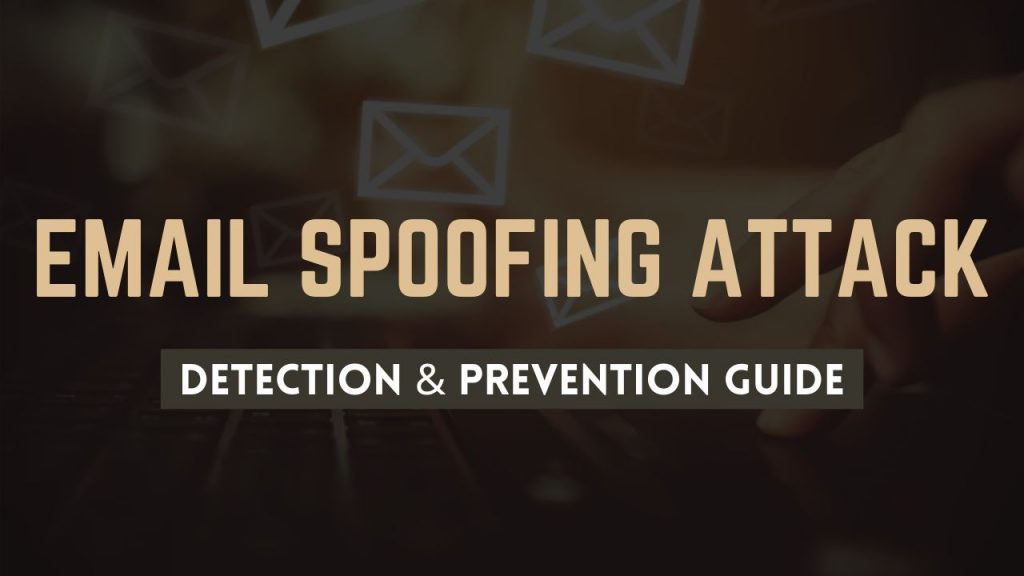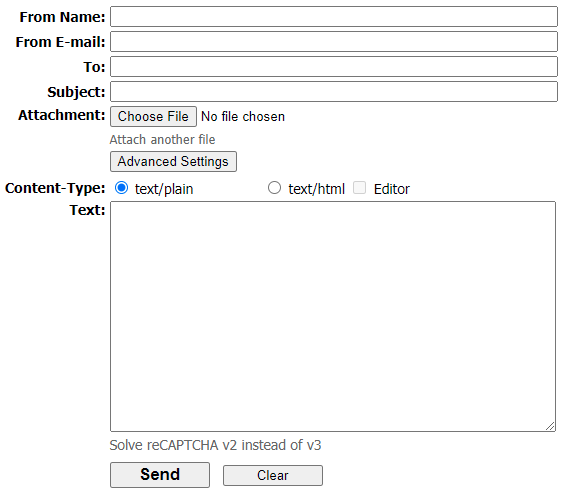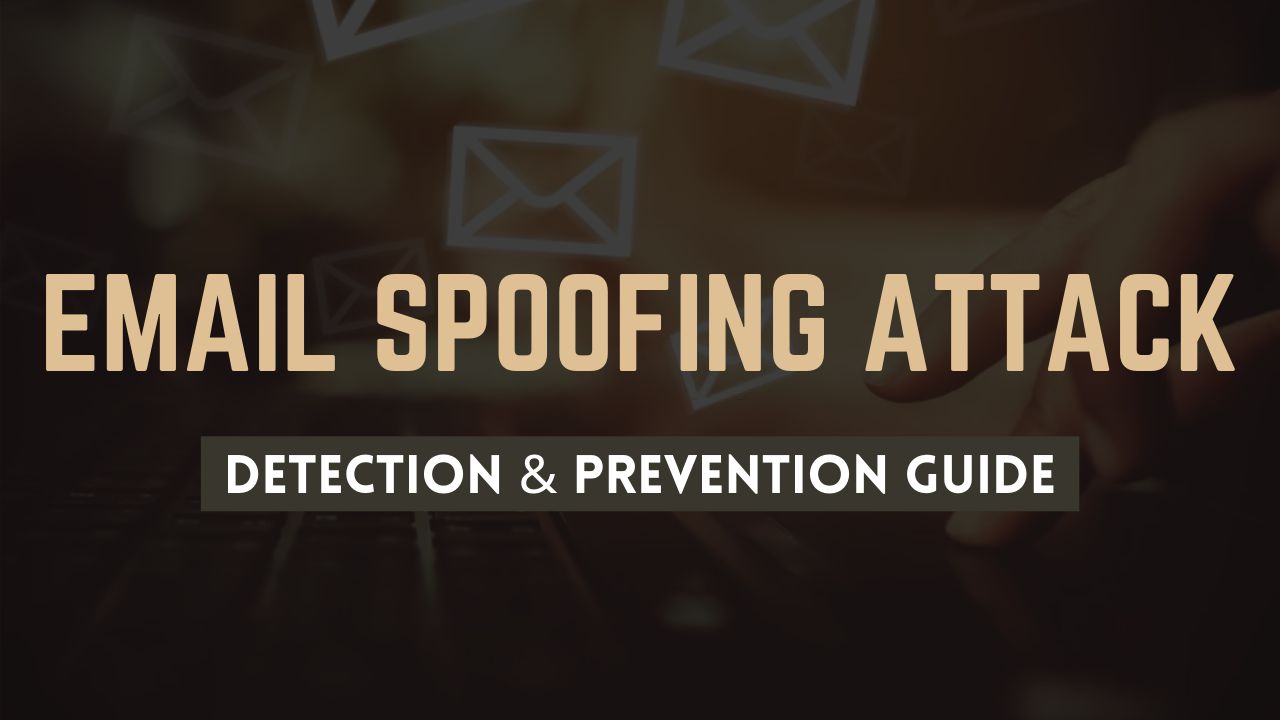
Hello hackers, today we will be discussing about Email Spoofing Attack. I will give you a complete overview of email spoofing like What is Email Spoofing? How does email spoofing work? Why email spoofing is possible? How to do email spoofing? How to detect and prevent email spoofing and many more things in this email spoofing tutorial.
What is Email Spoofing Attack?
Email spoofing is a big security issue in IT. It happens when someone makes up a fake email pretending to be from somebody else. In fact, everyone is susceptible to getting fake emails that appear to be from their colleagues or bosses. Many of them fall for it and leak sensitive information that can be exploited by spammers.
In email spoofing, spammers can make it look like an email is coming from a person that the recipient knows. The process of changing the from: field to make it seem like the email is coming from a specific person is known as spoofing.
This email trick is one of the most common, and it’s effective because the recipient doesn’t know that they’re replying to a spammer. This is because the email appears as if it came from the address in the “from” field. If they reply to the email, it will go to an email address that is likely owned by the spammer.
Why it is Possible to Spoof an Email?
Spammers have been known to do things like spoofing emails because of a loophole in the protocol used for transporting emails across the internet. The loophole is caused by what is known as the “SMTP” protocol.
SMTP (Simple Mail Transport Protocol) does not use any authentication mechanism for header fields. Spammers can easily forge these headers using certain commands, so they can make it appear as if the email is coming from a different source than its original one.
Why Spammers do Email Spoofing Attack?
Spammers spoof emails to obtain important data like SSNs, credit cards, bank accounts, and so on. Many spammers do this for different reasons but the most common is to gain access to valuable information.
How Emails are Spoofed?
SMTP lacks any authentication so servers that are not protected are susceptible to cyber-crime.
Spoofing emails is the easiest way to get someone’s attention. The easiest way to spoof emails is by finding a mail server with a poorly configured SMTP port. The attacker finds an open SMTP port and sends a fake email with a link. These emails are incapable of being traced, making them an effective way to lure unsuspecting victims.
In cases of CEO/CFO fraud, it’s very common for attackers to set up their email servers. It’s also the case that nothing is stopping them from doing this.
A spoofed email address is effective for tricking people into thinking an email came from a certain person, but the IP address of the computer sending the mail can often be identified from the email header.
Techniques used in Email Spoofing
It’s easy to change the “From” field on an email header, but the email can still be traced back to you. But most major ISPs maintain blacklists to ban known senders of spam from sending email traffic to users on their network.
Spammers have evolved and now want to get your attention by using a random email address. It’s important to be aware of this so that you don’t let them fool you out of your money or personal information.
These people use different techniques like hacking the account password(s) of one or more people in an organization or a normal victim to send messages from their email.
Spear phishing is a type of cybercrime where the perpetrator sends an e-mail or text message to someone within an organization or an average person. Once they have the person’s password, they can easily access all of their information.
Once the email is hacked, any emails in the address book are used to conduct additional attacks by placing those in the “From” field. This makes them appear to be legitimate and trick people into opening them.
Hackers use the same technique to propagate themselves in unsuspecting email users by exploiting their curiosity.
How to Send a Spoofed Email?
Email Spoofing is not a very complicated task, you just need to follow these easy simple steps and you can easily spoof any email.
Step #1: Choosing a Method
It’s easy to find methods for spoofing a domain on the internet. Some are very technical, some are not. I used a website to send a spoofed message for me, which was one of the top search results.
Step #2: Selecting a Target
When spoofing someone’s email, you need to target the domain that you are impersonating, which becomes the ending of the “from” address you choose. For example, if I want to spoof Facebook, I might use “mz@facebook.com but I can’t spoof facebook.com because they have a DMARC Reject Policy.
The target domain needs to be a registered domain. If it’s not, you can’t spoof it. In addition, the target domain needs to be one that has not configured a DMARC Quarantine or Reject policy. A None policy can be spoofed, but the site owner will notice you’re doing it.
To find out if a particular domain is using DMARC or what its DMARC policy is, use Fraudmarc’s Email Security Scores tool.
Step #3: Select Your Victim
You can send spoofed emails to anyone you know. It’s a fun way to prank your friends and colleagues, but it could be more malicious. The only thing you need is their Name and Email ID.
Step #4: Using Automated Tools
There are many automated tools used in email spoofing some of them are web-based tools and some of them are software-based tools that work on the same principle.
You just need to fill in some basic information just like you send a normal email and click on send.

How to Detect Email Spoofing Attack?
A spoofed email is an email that has been created with the intent to deceive. A spoofed email is more formal than an original email, and usually includes phrases like “Good morning” or “Hello.”
Read the email carefully. A spoofed email will rarely address the recipient by name, and it’ll often use formal or informal language.
Spammers send fraudulent emails in a batch, so no one is addressed individually. You can identify a spoofed email by looking at the “Internet header” and you should be able to see the original source of the email for yourself.
It’s difficult to tell if an email is fake just from the text. But it’s easy to call the sender and ask them if they sent it. Avoid replying to a suspicious email if you’re not sure.
How to Prevent Email Spoofing Attack?
So, can we really trace the email spoofing? The answer is a no if the user has used a proxy server while sending the email and the answer is yes if the novice hacker has sent it without using a proxy.
Sending an email on a spoofed IP address can be traced. The IP address used to send an email is logged, and can then be cross-referenced with the ISP DHCP records to determine who sent the email.
Spammers and hackers will not send spoofed email from their own IP address- instead, they will route the spam through other destinations before it reaches the desired recipient.
Spoofed emails are hard to spot and can be difficult to block with spam filters alone. Therefore, don’t obsess over your spam filters trying to block these emails.
To avoid becoming a victim of email spoofing, it is important to keep your anti-malware software up to date and avoid tactics used in social engineering.
If you’re not sure if an email is valid, contact the sender directly by phone, email, or text. This will ensure that no sensitive information is revealed and your account remains safe.
There is a great video on email spoofing by ThioJoe, you should watch this video to get more information about email spoofing attack.
Conclusion
Spoofed emails are difficult to block because of SMTP protocol vulnerabilities. Cybercriminals use these spoofed emails and SMTP protocols to steal sensitive information.
Scammers are getting smarter and sending more spoofed emails to steal your personal information. But you don’t have to worry. We’ve told given you the tips you need to protect yourself and avoid those annoying emails once and for all!
That’s it for this email spoofing tutorial, I hope you might have found this guide useful and from now you will keep yourself safe from these kinds of attack in future.
If, you have any question or suggestion feel free to comment them below. I will be very happy to help you.
Also Read : Pentester Academy Review – Courses & Certifications (2021)
- How to Become a Professional Gambler - March 29, 2024
- X Premium Subscribers to Gain Access to Grok AI Chatbot: A Strategic Move by Elon Musk - March 28, 2024
- Google Introduces AI Travel Assistant for Seamless Vacation Planning - March 28, 2024

